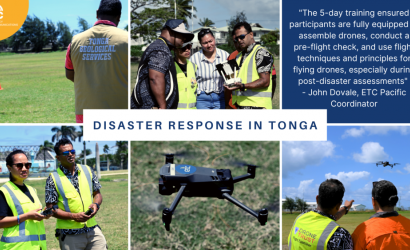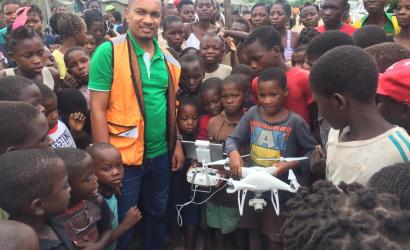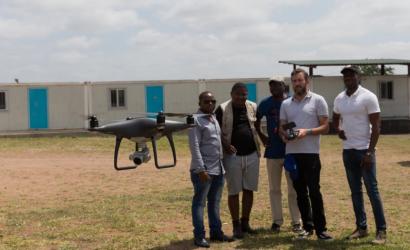Overview
Purpose: UAS, commonly known as drones, can be used for many applications, including search and rescue, imagery, transport, and connectivity. Humanitarian responders are increasingly deploying drones during emergencies for these applications.
Read the ETC UAS Coordination Model

While the use of drones during humanitarian responses bring many benefits, they also present a variety of challenges, including safety risks and duplication. For this reason, the ETC provides a UAS coordination service
Customers Segments: Humanitarian Organisations, National and Local Authorities.
Description: The ETC will coordinate the use of drones among humanitarian organizations through the following activities:
Activation of UAS coordination services: Activation and de-activation of ETC UAS Coordination services occurs as per any other ETC service. It is activated following an assessment that identifies a gap that needs to be filled in the humanitarian context to support the emergency operation. Once the gap is filled, services shall be transitioned and ultimately phased out.
UAS coordination can be integrated with the ETC coordination structure, or if required by assigning a dedicated UAS coordination function.
UAS Working Group (UAS WG): To support effective coordination, the ETC will engage with the response community and initiate the UAS Working Group which will convene UAS service providers with the capacity to deploy UAS services in the operation.
UAS regulations and safety information: To assist UAS service providers with regulatory compliance and safety, the ETC will provide information on what local regulations are in place, how they relate to UAS operations and where to obtain the necessary documentation and permissions.
UAS service mapping: The ETC will conduct an inventory of UAS service providers, showing which service providers are available in which location and their capacity to collect, process, store and share UAS data.
Coordination and implementation of UAS activities and services: The ETC acts as a point of contact for both the response community and UAS service providers. Through linking/bridging identified gaps and available resources, the ETC will enable local service delivery on ground, filling gaps while also avoiding duplication of efforts.
Mobilization of UAS resources: If the gap analysis indicates additional UAS resources are needed, the ETC can assist in mobilizing additional resources. This is expected to be supported by partners that contribute staff and/or technology on the ground.





